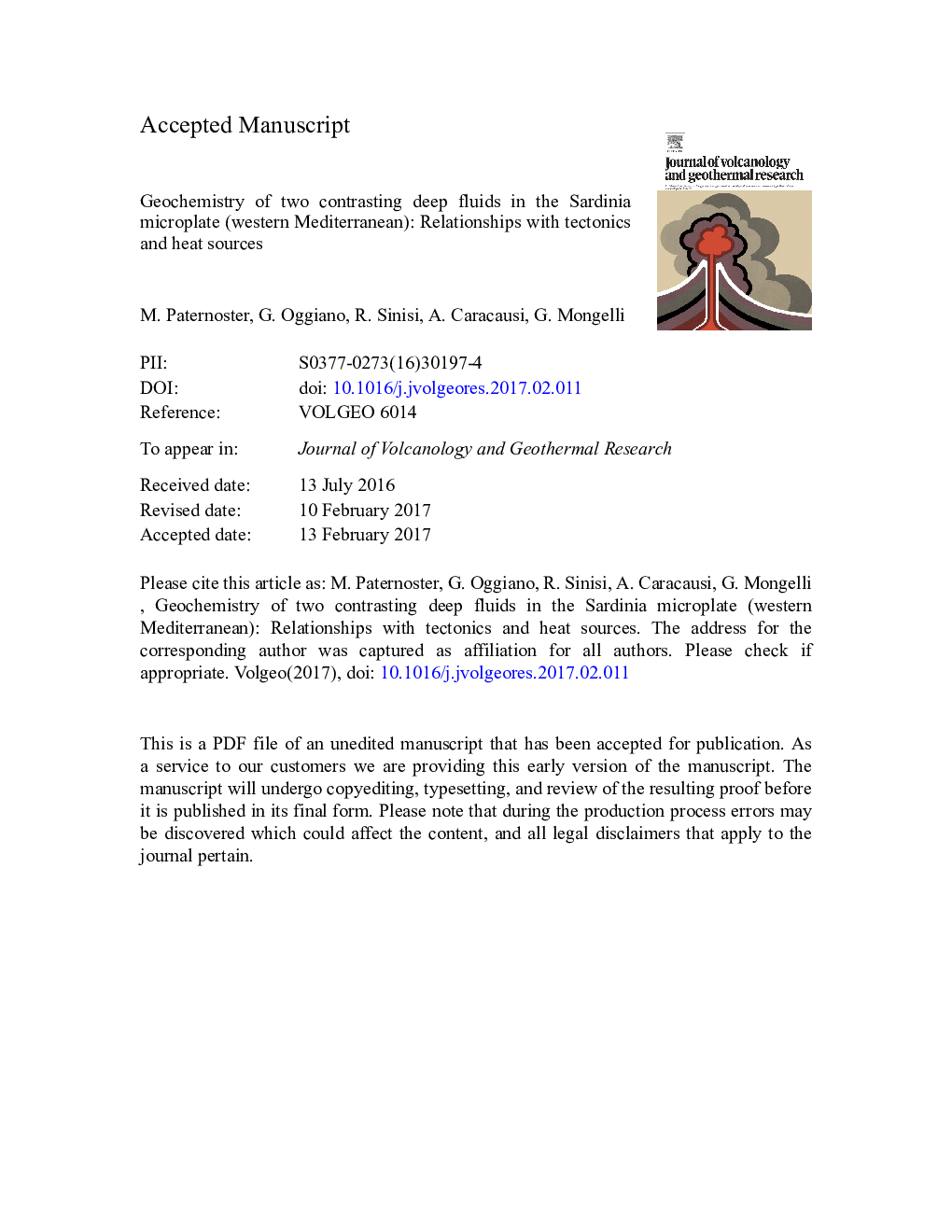| کد مقاله | کد نشریه | سال انتشار | مقاله انگلیسی | نسخه تمام متن |
|---|---|---|---|---|
| 5783860 | 1638287 | 2017 | 33 صفحه PDF | دانلود رایگان |
عنوان انگلیسی مقاله ISI
Geochemistry of two contrasting deep fluids in the Sardinia microplate (western Mediterranean): Relationships with tectonics and heat sources
ترجمه فارسی عنوان
ژئوشیمی دو مخلوط مایعات عمیق در میکروپردازنده ساردینیا (مدیترانه غربی): ارتباط با تکتونیکی و منابع گرما
دانلود مقاله + سفارش ترجمه
دانلود مقاله ISI انگلیسی
رایگان برای ایرانیان
کلمات کلیدی
ژئوشیمی سیالات، ایزوتوپهای هلیوم و کربن، امضای رادیوگرافیک و گوشته حرارتی ساردینیا،
موضوعات مرتبط
مهندسی و علوم پایه
علوم زمین و سیارات
ژئوشیمی و پترولوژی
چکیده انگلیسی
The Sardinia microplate in the western Mediterranean represents an ideal example for examining the relationship between fluid geochemistry, tectonic and heat sources in hydrothermal circuits. It consists of a portion of Variscan basement partly covered by sedimentary (mainly carbonate) and volcanic successions that record significant Permian to Pliocene geodynamic events within the southern European margin. The regional structure of the northern Sardinia is dominated by Tertiary ENE-WSW trending strike-slip and NNW-SSE trending normal faults, both capable of controlling deep and shallow fluid circulation. In this paper, results of a detailed geochemical investigation of waters and gases coming from a W-E trending section of central-north Sardinia are presented in order to explain the contrasting thermal and geochemical features of two - already known groups - of fluids. The Volcanic Logudoro Waters (VLW) is a group of cold to hypothermal Na-HCO3 waters characterised by high CO2 contents and mantle-derived He, that are localized in the volcanic-dominated Tertiary grabens. The He mantle signature within the VLW waters is associated with Plio-Pleistocene Quaternary volcanism where the outgassing of mantle-derived fluids is reasonably due recently active magma sources at depth. The currently active emission of mantle-derived gas linked to cold and hypothermal waters, provides evidence that the heat diffusion associated with the Plio-Pleistocene volcanism has already ended. In contrast, the Granite Variscan Basement Waters (GBW) group is characterised by hot-NaCl-rich waters, containing high concentrations of both dissolved N2 and radiogenic 4He. The high contribution of 4He produced by radiogenic decay of U and Th in the crust indicates a supply of radiogenic heat to the hydrothermal system localized within the granitic basement or in the tectonic contact between granite and Tertiary covers.
ناشر
Database: Elsevier - ScienceDirect (ساینس دایرکت)
Journal: Journal of Volcanology and Geothermal Research - Volume 336, 15 April 2017, Pages 108-117
Journal: Journal of Volcanology and Geothermal Research - Volume 336, 15 April 2017, Pages 108-117
نویسندگان
M. Paternoster, G. Oggiano, R. Sinisi, A. Caracausi, G. Mongelli,
